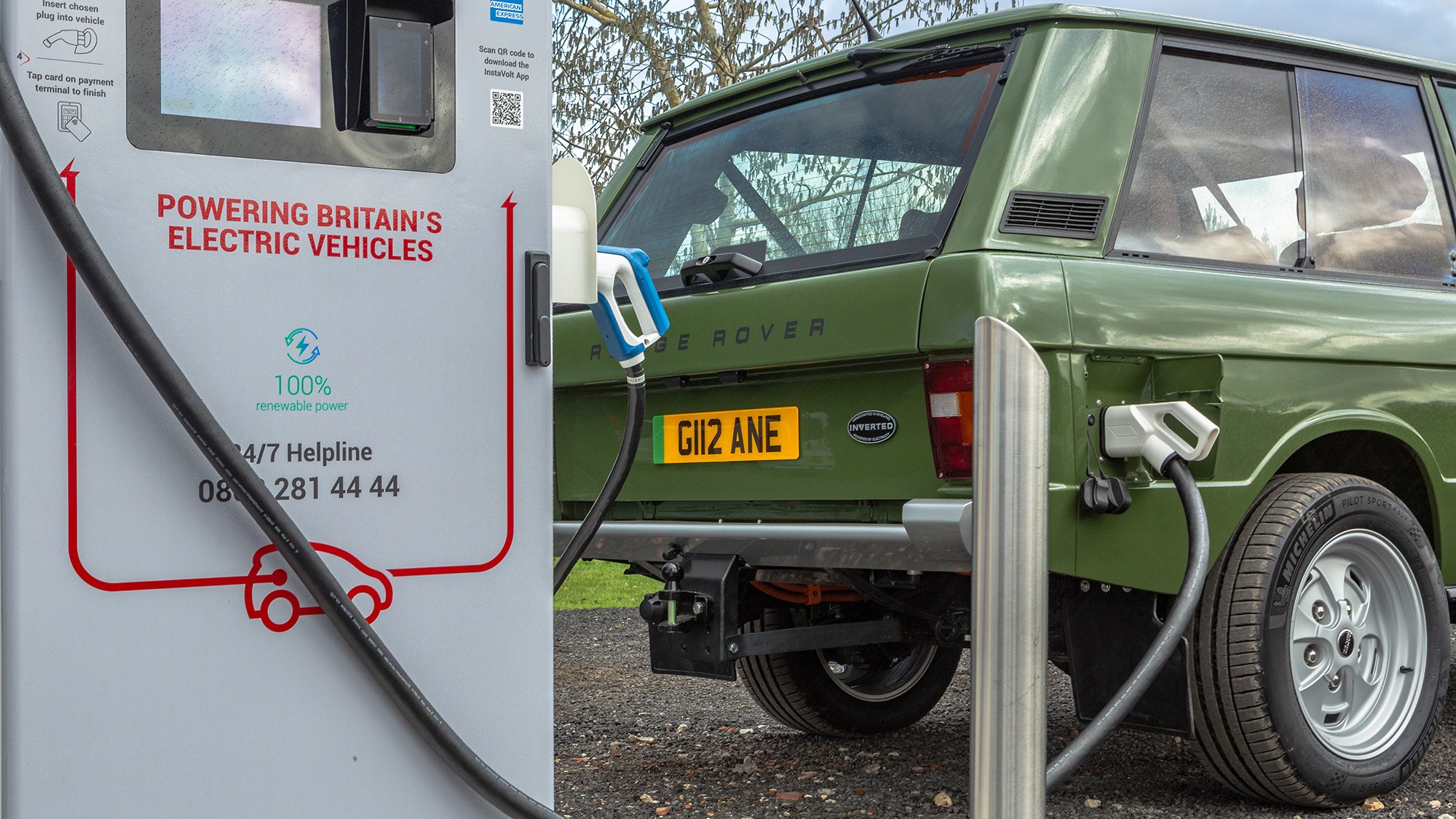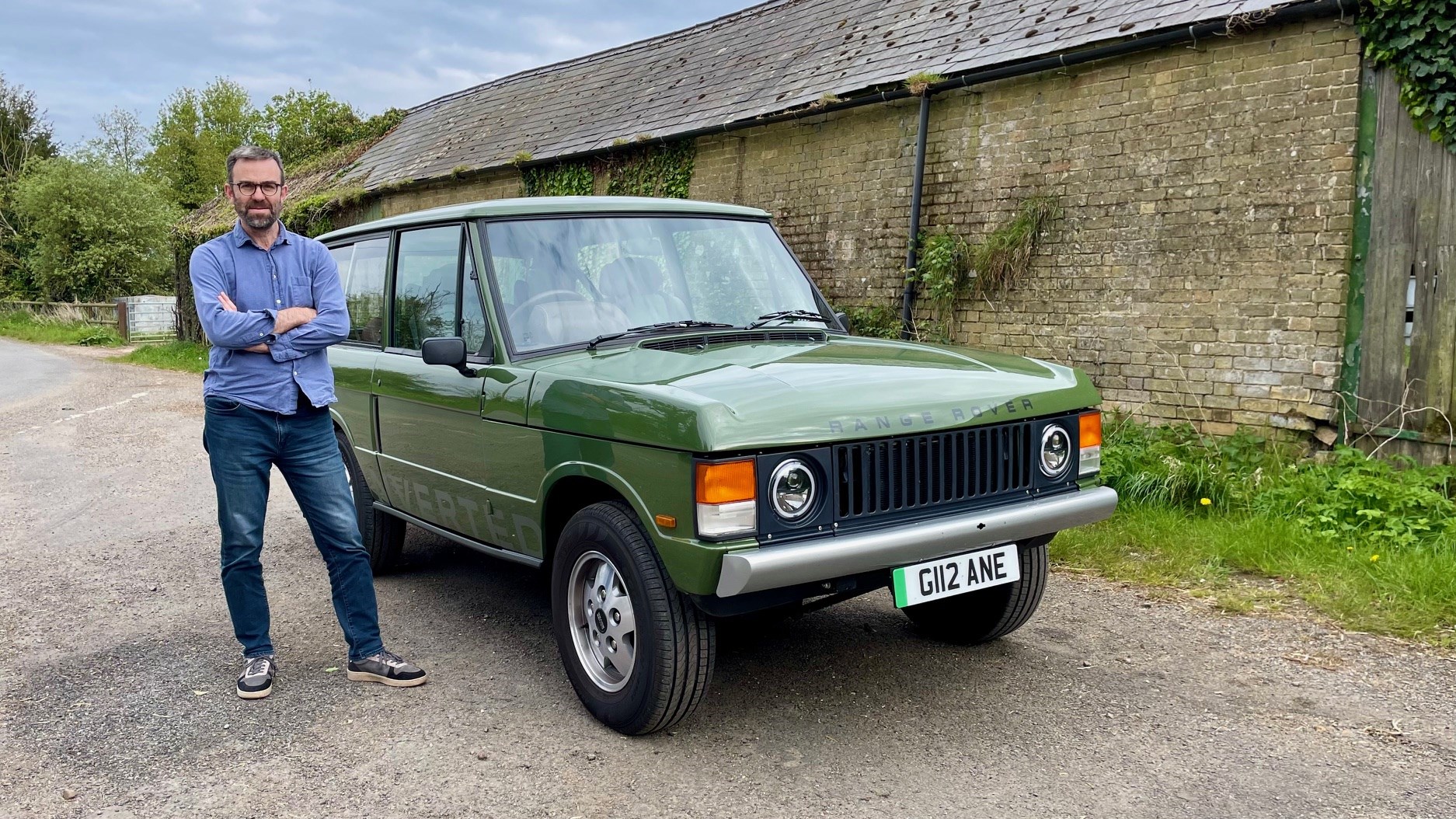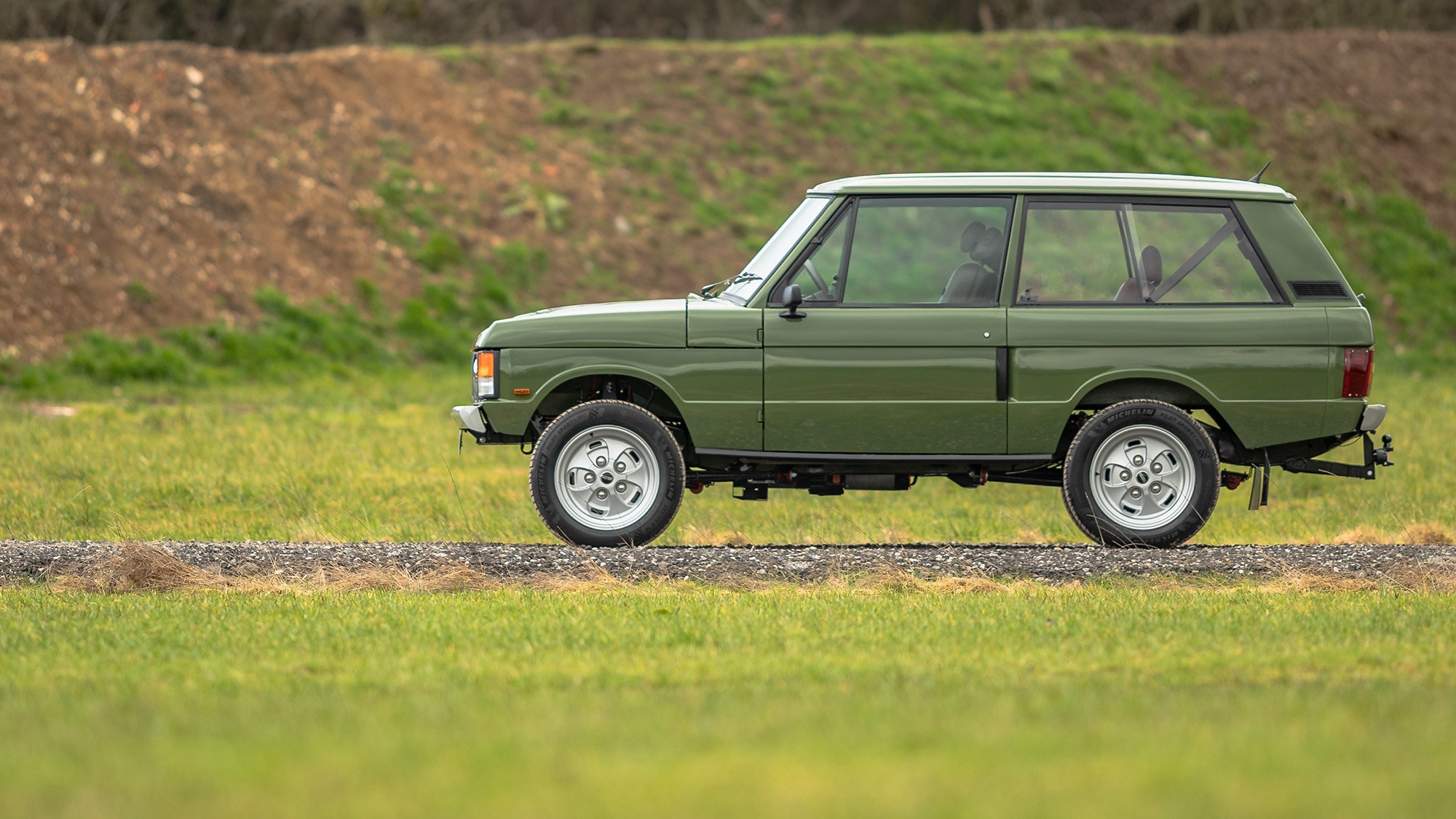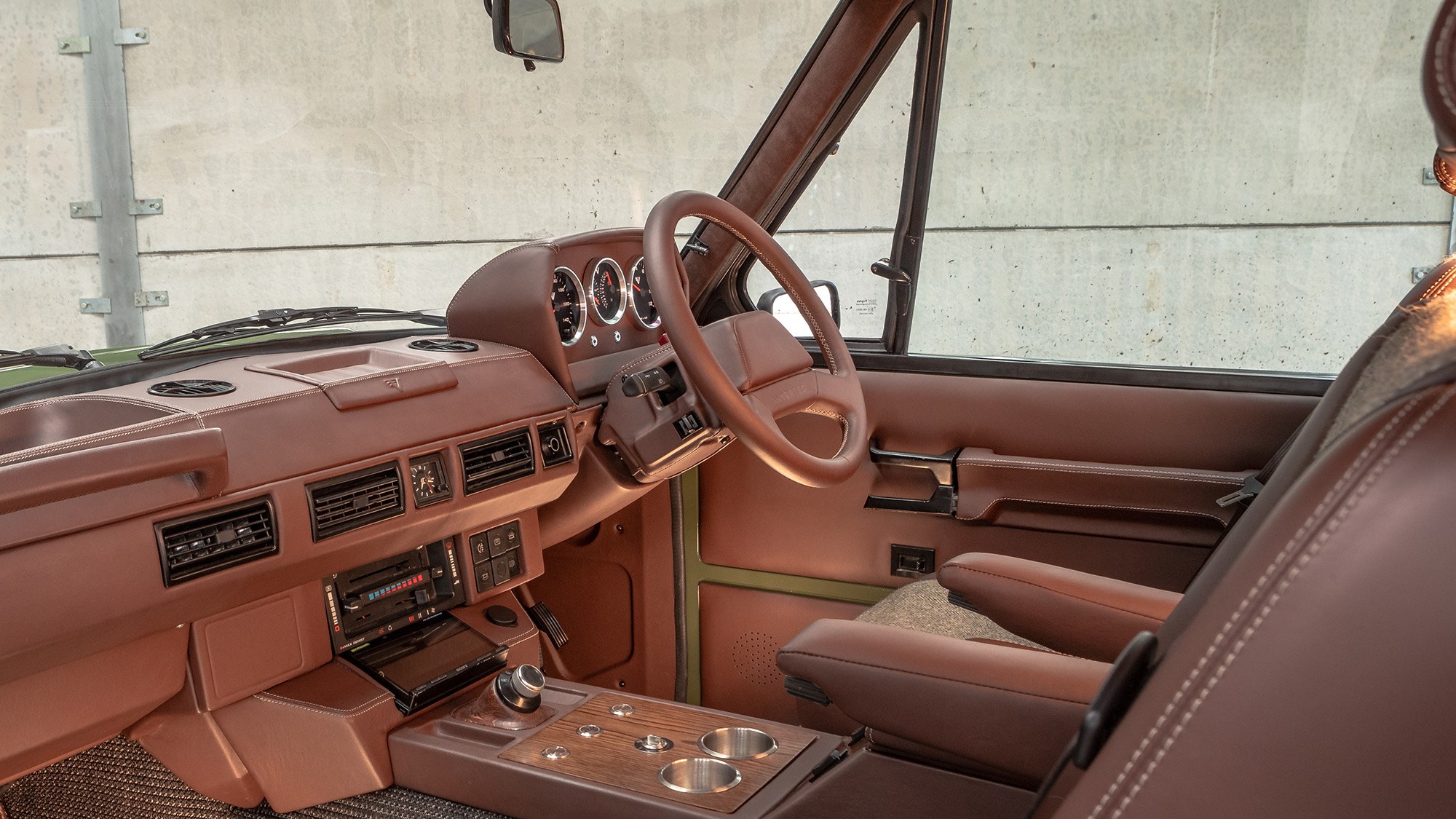► Range Rover Classic EV tested
► #001 prototype from start-up Inverted
► On the road in Inverted’s classic Rangie
Here’s a classic car electric conversion that ironically brings the original Range Rover in to the EV fold before the 2024 modern-day Range Rover Electric arrives this summer. It’s called the Inverted Range Rover Classic and we’ve driven prototype #001 developed by a new start-up seeking a foothold in the burgeoning e-classics scene.
Inverted is the brainchild of Harry Millington, a 34-year-old former property executive, petrolhead and EV fanatic who conceived the idea of taking an early Range Rover and electrifying it during the last, lockdowny few years. ‘I didn’t want to do an electric Defender; I wanted something classier, something cooler. These early Range Rovers are just perfect for conversion – it was basically the kind of car that I wanted and I figured there would be others who would crave it too,’ he tells CAR magazine.
Millington ended up quitting his day job in London and relocating to the family farm in Leicestershire to set up Inverted, a company partnering with specialists in classic car restoration and EV conversions to launch a range of interesting electric cars. And so it is that CAR magazine meets up to hear his back story and test car #001. Read on for our prototype Inverted Range Rover Classic electric car review.
Pros: Cool style, surprisingly sophisticated driving characteristics, fit and finish throughout, electric range
Cons: Expensive, still unproven business model, claggy throttle movement, some minor switchgear quirks
What’s new?
This is essentially a classic car conversion, whose foundation is a late Range Rover Classic three-door given a Tesla-powered transplant. The 1990 donor was in dire need of restoration (‘it was a car destined for the scrapheap, really,’ rues Millington. ‘Some of it was held together by Blu-Tack…’) and the three-door bodyshell was chosen for its extra rarity and catwalk cool.

The company can work with any which flavour of old Range Rover, from two-door shells or five-door bodystyles. Inverted will source the donor Range Rover for you and commission a ground-up restoration as part of its package. Alternatively, prospective customers can do the legwork themselves; it’s all very bespoke and you can spec it just so to your every whim.
What are the specs?
#001 is based on a 1990 Range Rover Classic from Birmingham. Out went the original V8 and in comes a reconditioned Tesla 80kWh battery module and Large Drive Unit from a 2017 Tesla Model S. Millington says the donor vehicle had only done 6000 miles and Inverted adds a new gearset, oil pump and limited slip differential to maintain the Range Rover’s four-wheel drive and mountain-goat talents.
As anyone who’s experienced the stomach-wrenching performance of a rapid Tesla will know, Musk’s hardware is potent, but Inverted have capped the 600bhp potential to a more manageable 450bhp in the Range Rover Classic. This old-timer is heavier than a period Rangie (weight is up from around 1850kg to two tonnes, with batteries and e-motors), but the drivetrain is sufficiently torquey for 0-60mph in around five seconds.
Software allows three different drive modes: Eco, Sport and Off-Road, each setting offering varying tunes of power, accelerator mapping and regenerative braking. You can feel each the effect of each mode, especially in the single-pedal driving of Eco; it’s not as dramatic as the regen on some cars, but pretty well judged straight out of the box.

It’s a Range Rover, so obviously off-road performance is required and Millington says it performs well when greenlaning. The original differentials and transfer boxes are retained and the Tesla power unit drives all four wheels. We didn’t venture off the tarmac during our test drive, but traction on-road is peerless.
Front and rear axles retain their original geometry but are uprated with Fox dampers, 25% stiffer springs and adapted anti-roll bars as part of the optional road handling pack fitted to #001, while the brakes are uprated with more modern Alcon rotors and pads to provide up-to-date deceleration.
Range and charging
You buy an electric car to assuage environmental guilt and to support the green-tech revolution. So you can do worse than pick Tesla innards, right? The 80kWh battery is good for 200 miles of range, according to Inverted, and our test drive would support that being realistic, if driven at gentle pace.
Driven more enthusiastically, or on more varied cross-country roads, and around 2 miles per kilowatt hour is realistic, pointing to a more realistic range around 160 miles. The range meter onboard proved accurate during our test drive.

We did not get a chance to plug the Inverted Range Rover Classic #001 in to charge, but the company claims 75kWh DC charging and the AC charger onboard allows for 6.6kW home-charging on a domestic wallbox. A 20-80% charge takes around 34 minutes at a suitably fast charger, according to Inverted.
How does it drive?
The electric Range Rover Classic is utterly bewitching to look at. As you approach the period olive green 4×4, it looks immaculate: a clever balance of original looks with a few telltale signs of the upgrade beneath – the headlamps are in period style, but uprated for superior illumination, for instance. You climb in and are transported back to the year Maggie Thatcher was booted out of Number 10 and before the internet had reformed the way we live our lives.
Switching on is a little complicated: it takes a couple of twists of the key to get the EV systems to wake up, but soon we’re underway. You simply select Drive on the prosaic rotary dial on the centre console, release the electric handbrake with the flick of a switch and pull away. Sounds easy, but I’m still fumbling after a few hours behind the wheel.

It’s eerily quiet in here and you’re immediately struck by the relatively compact dimensions of the original Rangie. It’s no behemoth like today’s and is easy to thread through busy streets.
We pull into urban traffic and head out of town. The car is effortless to drive and I’m soon shrugging off its 34-year heritage and pedalling it along at the speed of a modern SUV. It’s all so easy and unintimidating. I’m most struck by the fine tuning of the steering and chassis; this Range Rover tracks straight and true and the large steering wheel provides decent feel and precision. You’re not left sawing at the wheel like BA Baracus in The A-Team, which is often the case in older classics.
Performance is well judged. It doesn’t feel quite as quick as its 5.0sec 0-60mph claim, but it’ll fairly pick up its skirts and slingshot forwards if you stab the long-travel accelerator, especially in full-beans Sport mode. But that destroys the battery range and who wants to drive a classic Range Rover like that? Better to ease back, soak up the style and surprise other road users with your silent progress in a true British automotive icon.

Its age is betrayed by a few details. Road noise is evident and there’s a tickle of slipstream by my right knee. Millington says new door seals are being designed to prevent the ingress of passing air. The parking brake switch is somewhat fiddly to use although I have no doubt that a longer acquaintance would overcome this.
These feel like details. The actual core engineering rightness of the original Range Rover shines through. The chassis calibration, in particular, is spot-on with deftly tuned suspension and steering and Inverted’s electric transplant feels entirely natural in this package.
What about the interior?
Step up into the Range Rover cabin and the first thing that strikes you is the sheer quality of the thing. You’re transported back to the 1980/90s, but with 2020s quality levels, for the most part. The reupholstered seats are comfy and well padded, trimmed with achingly cool Harris tweed fabric and the dashboard ahead is lined in low-carbon Muirhead leather and finished to a high standard.

There are some intriguing juxtapositions. The heating controls remain stubbornly 34-year-old originals yet sit cheek-by-jowl next to an Apple CarPlay enabled third-party stereo low down on the dashboard, a reversing camera and USB charging points. The gear selection rotary controller and parking brake switch on the centre console are evidently new, but all other controls – and the beautiful, retro dials – are easy to use, well thought through and effective.
There’s a wonderful view out from the cockpit: this was the pioneering first luxury SUV, remember, and that throne-like, elevated driving position overseen by engineering and product legend Spen King is still wonderful. Slimline pillars and excellent visibility all-round are reminders of how boxy and over-pillared modern cars have become. This was one of King’s personal bugbears and driving the original Rangie again reminds me why.
The rear seats are fabulous; Inverted offers a bench or two individual rear seats and you’ll have to pick between the chic style of the two-door bodyshell or a more practical five-door.

The boot is significantly impeded by the Tesla battery pack in the #001 prototype, but useful space remains, as does the split tailgate for ultimate picnic bragging rights. It’s fabulously appointed, carpeted in a tough, wipe-clean manmade material with leather-lined binnacles on either side. The compartment on the right is perfect for storing Type 2 charging cables.
Interestingly, Inverted says it is likely to switch to Volkswagen ID battery packs, as they package better in old Range Rovers. Millington claims this will liberate substantially more boot space in future production models.
Before you buy
This is very much a start-up business and we wouldn’t be doing our job if we didn’t point out the potential risk of sticking quarter of a mill large into an unproven business model. That said, on this evidence Inverted is creating impressively high-quality cars and has set its sights at a realistic level, aiming for no more than half a dozen cars a year tops.
Millington has taken his first order already and is commissioning a five-door car to the customer’s every whim. He anticipates interest worldwide and is already fielding calls from American enthusiasts. Take your pick from three different classic Range Rovers:
- Range Rover Classic 2dr: £245,000 + VAT
- Range Rover Classic 4dr: £225,000 + VAT
- Range Rover Classic LSE: £245,000 + VAT
If you’re taking the plunge, you can expect the conversion to take between 12-18 months. Inverted offers a 12-month warranty and ongoing servicing and maintenance care packages.
Verdict: Inverted Range Rover Classic EV
What impresses most about the electric classic Range Rover is the sheer quality of the thing. Inverted has created a prototype that is beautifully finished, with an eye for balancing period detail with modern niceties. It walks the restomod line with aplomb and it’s clear that the specialists deployed to pull this package together really know their onions.
You’d expect as much at the price and we can forgive a nearly-four-decade-old classic car a few old-school quirks. I’d like to see better integration of core controls for the money being asked: the ‘ignition’ start-up routine, deployment of parking brake and selection of gears – the controls you’ll use every single journey – could be easier to use and more satisfying in their haptic response.
These feel like details and bearing in mind what Inverted has achieved in such a short space of time, I wouldn’t bet against these features being improved pretty swiftly. I hope they do, because at heart the Inverted Range Rover Classic Electric is an utterly charming, beguiling and smartly executed upgrade to one of Britain’s most celebrated and loved classic cars.